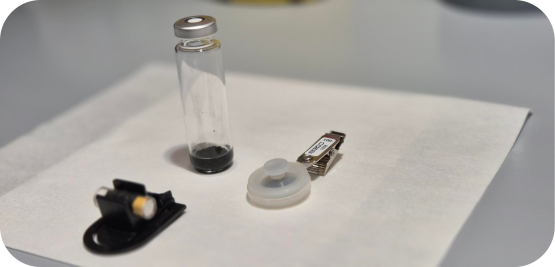(Download: Monitoring EO in Ambient Air: Badge Testing & In-Package Safety Checks in PDF by Medistri)
EO remains essential for sterilizing heat and moisture-sensitive medical devices. But as regulatory expectations tighten, controlling EO in the workplace air and inside packaged product is now a critical part of safety and compliance.
Why This Matters More Than Ever
Across Europe, binding occupational exposure limits (BOELVs) for carcinogens are being strengthened, and national regulators are pushing for more rigorous indoor air control. In the U.S., the EPA has announced new measures to drastically reduce EO exposure for workers, with phased reductions in permissible levels down to 0.1 ppm over the coming decade. These initiatives confirm a global trend: regulators expect documented, reliable monitoring strategies for EO in both production and handling environments.
For manufacturers, that means demonstrating not only that EO is removed from devices (ISO 10993-7) but also that the air around operators, warehouses, and packaged pallets remains safe.
EO Badge Testing
EO badges are small, passive samplers worn by operators or placed in critical areas. Over a defined exposure period, they absorb EO from the surrounding air. Once analyzed in our laboratory, they provide:
- Quantitative measurement of EO exposure
- Comparison against occupational limits
- Clear documentation for regulatory submissions and safety files
This makes badge testing a simple yet powerful tool to verify compliance, protect staff, and satisfy inspectors.
In-Package / Headspace Checks
More and more clients also request EO headspace testing inside packaging — from pallets to cartons and boxes. These checks ensure that EO residues do not accumulate in confined spaces that staff open, handle, or transport. By combining device residual testing with real-world packaging checks, manufacturers provide stronger assurance that EO risks are under control throughout the supply chain.
Badge Testing Beyond EO
While EO is the most regulated in sterilization contexts, the same badge monitoring approach can be applied to other volatile compounds frequently present in healthcare and pharmaceutical environments. Passive diffusion badges can also measure solvents such as isopropanol (IPA), ethanol, acetone, toluene, or methyl ethyl ketone (MEK).
This makes badge testing a versatile solution: manufacturers can document workplace safety not only for EO, but also for a broader range of chemicals used in cleaning, disinfection, and production processes.
Partner with Medistri
By combining EO badge testing, in-package headspace checks, and residual testing on devices, Medistri offers a complete solution for chemical safety monitoring. Our services are developed in line with international standards and regulatory expectations, providing manufacturers with reliable data and practical support for audits, risk assessments, and occupational safety strategies.
Contact us at contact@medistri.com to learn how we can support your EO monitoring and chemical safety programs.
1. What is EO badge testing and how does it work?
EO badge testing uses small passive samplers that collect EO from the surrounding air during a set exposure period. After laboratory analysis, the results show actual exposure levels, allowing comparison with occupational limits and providing clear documentation for safety records or regulatory files.
2. Why is monitoring EO in workplace air increasingly important?
Regulatory limits for EO exposure are becoming stricter across both Europe and the United States. Regular monitoring helps ensure operator safety, demonstrates compliance, and supports companies in maintaining safe working environments.
3. How do in-package headspace checks complement EO badge testing?
Headspace checks measure EO levels inside boxes, cartons, or pallets where gas may remain after sterilization. This ensures that handling and transport activities can be performed safely, reducing potential risks for staff and surrounding areas.
4. When should manufacturers extend badge testing beyond EO?
Manufacturers that use other volatile compounds such as isopropanol, ethanol, or acetone can apply the same passive monitoring approach. This helps maintain consistent workplace safety practices and ensures all potential exposures are documented and controlled.
5. How does Medistri support manufacturers with EO and chemical monitoring?
Medistri offers validated badge testing and headspace analysis methods aligned with international standards and regulatory expectations. Through integrated monitoring programs, Medistri helps manufacturers ensure safety, compliance, and readiness for inspections.
